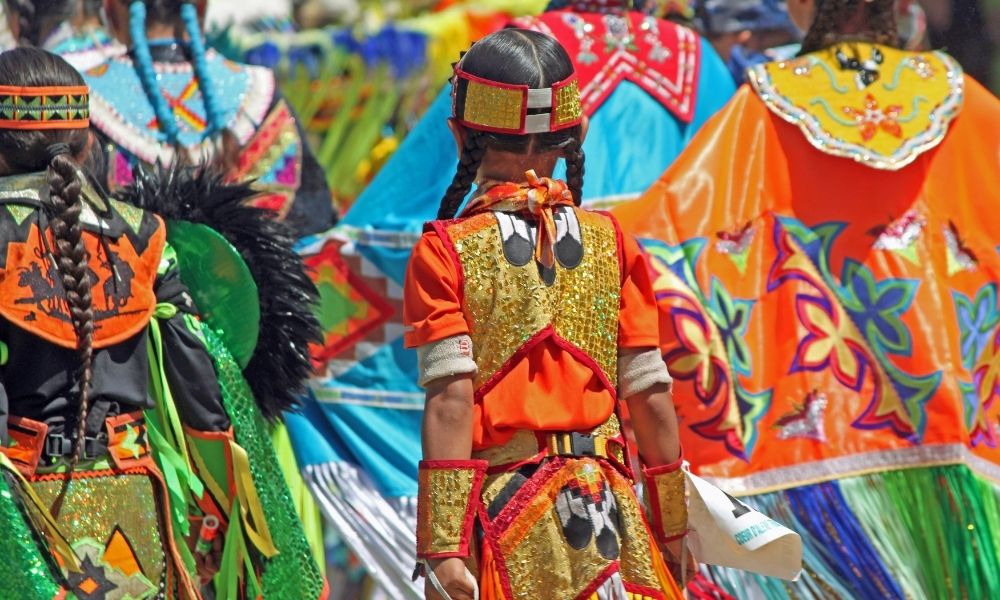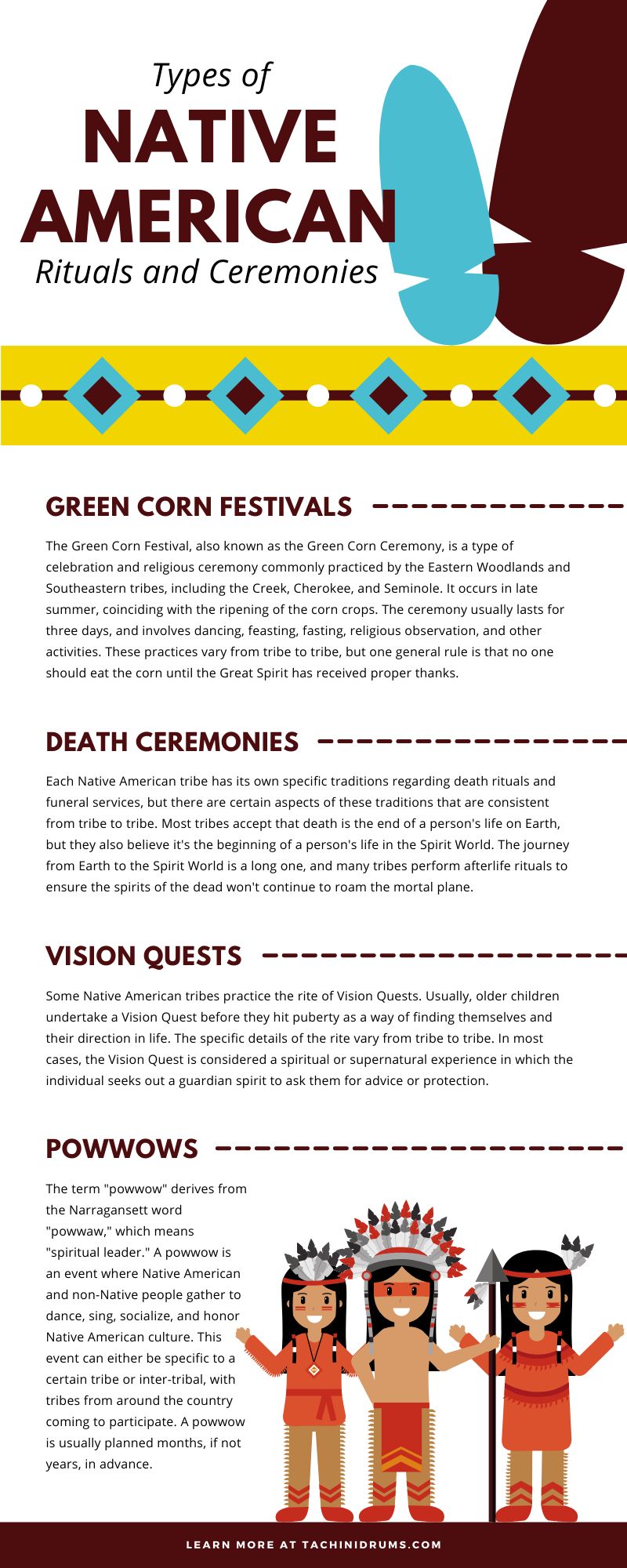Top Authentic Native American Drum Accessories
Native American drums are sac..
 ">
">While Native American spirituality, ceremonies, and rituals are commonly referred to as a “religion,” they aren’t necessarily religious in the same sense as Christianity or Judaism. The beliefs and practices of most Native American tribes are an integral part of their being. They’re often heavily influenced by the way the tribe historically acquired food, whether that was through hunting, fishing, or agriculture. Other Native American ceremonies and rituals focus on providing power and guidance, celebrating various events and milestones, and paying homage to the dead. These practices evolved according to the needs of individual tribes, causing them to differ slightly or even dramatically from region to region. The arrival of European settlers to the US led to a massive change in Native American rituals and ceremonies. In an effort to assimilate the Native Americans into the majority culture, the United States government implemented policies that forced Native Americans onto reservations and banned their traditional practices. Eventually, the prohibition of Native American ceremonies and rituals ended, but not without a harrowing amount of loss. Certain traditions vanished during these troublesome years, but thankfully, many others survived. Let’s look at some of the enduring types of Native American rituals and ceremonies in-depth and learn more about how they’re practiced today.
The Green Corn Festival, also known as the Green Corn Ceremony, is a type of celebration and religious ceremony commonly practiced by the Eastern Woodlands and Southeastern tribes, including the Creek, Cherokee, and Seminole. It occurs in late summer, coinciding with the ripening of the corn crops. The ceremony usually lasts for three days, and involves dancing, feasting, fasting, religious observation, and other activities. These practices vary from tribe to tribe, but one general rule is that no one should eat the corn until the Great Spirit has received proper thanks. During the ceremony, the members of the tribe give thanks for the corn, rain, sun, and a good harvest. The Green Corn Festival is considered a religious renewal, and various religious ceremonies are sprinkled throughout the festival. Other events often take place during or around the time of the Green Corn Festival. It’s the time of the year where problems or crimes are forgiven, babies are given their names, ball games and tournaments occur, and tribal members participate in the cleansing and purifying of their homes and bodies.
Each Native American tribe has its own specific traditions regarding death rituals and funeral services, but there are certain aspects of these traditions that are consistent from tribe to tribe. Most tribes accept that death is the end of a person’s life on Earth, but they also believe it’s the beginning of a person’s life in the Spirit World. The journey from Earth to the Spirit World is a long one, and many tribes perform afterlife rituals to ensure the spirits of the dead won’t continue to roam the mortal plane. The deceased are honored in several ways, usually by presenting them with food, herbs, and gifts that are designed to make their journey to the afterlife safe and comfortable.
The Hopi, for example, believe that a person’s soul travels along a Sky Path westward. If the deceased was a good, righteous person in their time on earth, their journey will be quick and uneventful. If they lived a disagreeable life, they’ll experience a journey filled with hardship and suffering. After death, the deceased is washed with natural yucca suds and dressed in traditional clothes. This ensures a safe journey to the afterlife. Tribe members wrap the forehead of the deceased with prayer feathers, and they bury them with their favorite earthly possessions and prayer sticks. Family members and friends will leave special herbs and traditional foods at their grave site.
Some Native American tribes practice the rite of Vision Quests. Usually, older children undertake a Vision Quest before they hit puberty as a way of finding themselves and their direction in life. The specific details of the rite vary from tribe to tribe. In most cases, the Vision Quest is considered a spiritual or supernatural experience in which the individual seeks out a guardian spirit to ask them for advice or protection. The Vision Quest requires a great deal of preparation, with the individual being sent out into the wilderness for days or confined to a small room. They’re usually required to fast before the rite and aren’t allowed to sleep. During this period of sensory deprivation, they’re supposed to search for a guardian spirit or a certain presence or sign. Once the individual realizes their direction in life, they return to the tribe to pursue the path that the guardian spirit, presence, or sign guided them toward.
Another type of Native American ritual and ceremony is the powwow. The term “powwow” derives from the Narragansett word “powwaw,” which means “spiritual leader.” A powwow is an event where Native American and non-Native people gather to dance, sing, socialize, and honor Native American culture. This event can either be specific to a certain tribe or inter-tribal, with tribes from around the country coming to participate. A powwow is usually planned months, if not years, in advance. The powwow committee organizes the event, arranging its location and date, as well as any vendors. The powwow session begins with the Grand Entry. Military veterans and active-duty soldiers carry in the Eagle Staff and the flags of various nations. They’re followed by the head dancers, with the remaining dancers entering the arena in a specific order: men’s Traditional, men’s Grass Dance, men’s Fancy, women’s Traditional, women’s Jingle, and women’s Fancy. People perform a wide variety of dances, varying based on the region in which the powwow is held and the tribes in attendance. The dancing is often accompanied by chanting and drumming. A host drum will play the grand entry song, a flag song, and a veteran’s song to start the powwow, and a flag song, retreat song, and closing song to end it. Families and friends will break out into smaller drum groups, gathering around powwow drums and providing a beat for the dancers to hop, skip, and sway to.
The powwow drum plays an important role at the powwow. It’s designed to bring the heartbeat of Mother Earth to a place where everyone can hear and feel it. If you’re searching for this special drum, Tachini Drums has authentic, masterfully crafted Native American powwow drums for sale. We’re proud to be one of a few sellers that provides authentic Native American drums and drum supplies to people who are interested in connecting with Mother Earth and Native American cultures.
